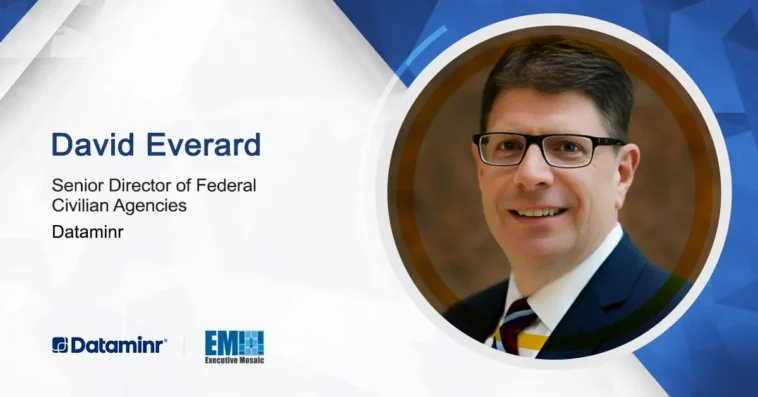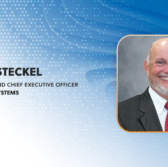Artificial intelligence has been a major focus for David Everard throughout his 40-year career in the federal information technology sector. He currently serves as Senior Director of Federal Civilian Agencies at Dataminr, and what brought him to the company is its mission to help organizations detect threats and respond to real-world events using AI, which he said “can literally save lives.”
Prior to joining Dataminr, he held executive positions at Intel, Elsevier, and Voyager Labs.
In a recent Executive Spotlight interview with ExecutiveBiz, Everard examined the current state of the AI field, discussed cyber-physical convergence and offered a closer look into Dataminr’s areas of expertise.
Tell me about the current state of the artificial intelligence market. Where are you seeing new opportunities in AI, and where do you think the market is heading?
The evolution of AI is what’s really happening now, and we’re at a phase where data has become the most important piece. This might sound trite, but if you think about it like the term ‘you are what you eat,’ AI is only as smart as what we feed it. But even if you feed the AI the entire Library of Congress, that doesn’t mean it will be able to make the best-informed decisions. For domain specific tasks, it’s giving AI access to a deep archive of information that is directly pertinent to what you want it to do. An example of this is what we do at Dataminr, which is having that deep archive of relevant data to create multi-modal foundation models and large language models that enable our customers to “Know First and Act Faster”.
It is encouraging to me that we are beginning to see the AI market go into a period of optimization and standardization. Instead of just asking if something is possible, we are asking how it can be done better, faster, more economically and what the real result is. As this mindset is applied, there too are some big challenges that we’re running into with computing and memory and electricity needs.
The fact that this optimization and standardization is happening now highlights to me that we’re moving into a next phase where it’s not just nifty, it’s useful, if not critical. This presents a great business opportunity for people that do that optimization and have that business results level understanding of what it takes to make these tools run on infrastructure and be able to deliver a real and powerful solution.
It is becoming more and more important for AI to be able to utilize a variety of data sources – similarly to how humans take in information – to give people guidance. Initially, many AI systems were just based on text, so they could read text and make inferences and try to help people. Now, with so many types of available data, including video, images, audio and sensor data, the ability to train the AI to use those as sources requires a multimodal AI capability.
I also see that AI is not truly artificially intelligent in a certain way. We want it to be augmentation intelligence. We want it to help us do our jobs, execute the government mission or do whatever we’re trying to do better, with the optimal, if even only minimal, amount of human input and control in the loop.
What do you think is the biggest threat facing U.S. cyber systems today, and what can be done to protect against that threat?
Cyber-physical convergence is the main issue today. In the cyber world, it used to be simply attacking an IT system, harming someone’s data, or messing with their operational system from an IT perspective. Now, we’re starting to see cyber-physical convergence and the challenges that go with the combination of the IT environment with the operational technology, or OT, environment. In these cases, it’s not just a threat to one type of system, it could be a threat to, for example, transportation systems or natural resources, even if it originated in the cyber world.

The way this issue can be improved is by sourcing the right multi-modal data and being able to identify these threats earlier using AI. A lot of what has happened in cyber in the past has been reactionary as opposed to thinking more to the left of the timeline and looking at threats posed not just to your agency but to adjacent agencies or an adjacent industry cyber realm. These threats are something that may affect the government or national security, and knowing about those sooner and being able to mitigate them is critical.
Dataminr is sponsoring the Potomac Officers Club’s 2024 Cyber Summit on June 6. This event will bring together key public and private sector cyber experts to discuss the complex, ever-changing cyber domain and the challenges and opportunities it presents for the U.S. government. To learn more and register to attend the summit, click here.




